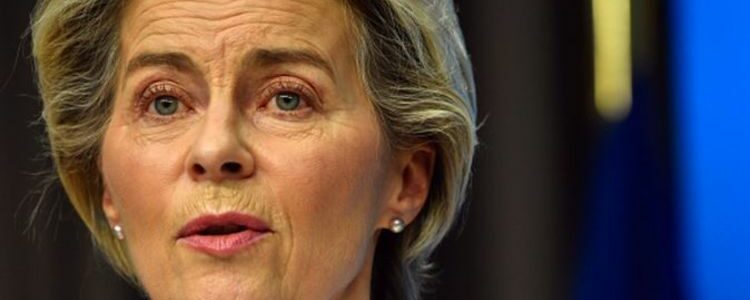
EU on brink of huge row as bloc torn in two over post-pandemic fiscal rules
EU: Some countries need 'enormous' fiscal adjustment says expert
We use your sign-up to provide content in ways you’ve consented to and to improve our understanding of you. This may include adverts from us and 3rd parties based on our understanding. You can unsubscribe at any time. More info
The bloc is split in two with southern states calling for substantial reforms to eurozone fiscal rules to avoid a return to pre-pandemic rules and more frugal northern members calling for a return to stable fiscal policies.
The debate has been raging for a while, but it seems the EU Commission is also now split.
Last year, EU Commissioner Paolo Gentiloni warned differences between northern and southern states are a risk worth taking in order to reach an agreement, as he backed Spain, France and Italy on their proposals.
He said: “The risk of differences is there — you could even argue the risk is stronger if you don’t open the debate on the rules.”
But speaking to the Financial Times on Tuesday, Johannes Hahn, the EU’s human resources and budget Commissioner was weary of stripping out some categories of public debt from national budgets as advocated by some southern countries.

He said: “I am not supporting any ideas [to] exclude certain kinds of debts, qualifying them as good ones, sustainable ones, green ones etc. At the end of the day, debt is debt.”
He added that member states should instead face regular “stress tests” of their public finances.
The rules, which are designed to ensure fiscal discipline, were suspended during the pandemic.
Eurozone finance ministers are due to discuss the issue in Brussels on Monday.
READ MORE: Brexit fury: Truss urged to tear up hated EU deal NOW
Executive vice-president Valdis Dombrovskis has insisted that member states must come up with “credible” plans to cut their debt.
But Mr Hahn, who is Austria’s commissioner and a member of the centre-right European People’s party, is backing frugal northern states such as the Netherlands, Nordics, and Baltics.
Last year, former Austrian Finance Minister Gernot Bluemel said the rules had been central to reducing debt-to-GDP ratios across the bloc after the sovereign debt crisis.
Mr Bluemel wrote in the letter: “A key lesson after the financial crisis was the need to reduce high debt ratios and increase fiscal sustainability in order to prepare for unforeseen future events.
DON’T MISS:
Diane Abbott torn apart by Tory MP [VIDEO]
GB News: Sturgeon slammed over ‘fantasy’ referendum U-turn [REACTION]
Patriotic Truss could force Boris’ hand on deal [ANALYSIS]

“The Commission will come up with a review of the economic governance framework in the coming months.”
He added some ideas for reforms of the EU’s Stability and Growth Pact presented by southern states were “concerning”.
He said: “I am somewhat concerned about some contributions questioning a rules-based framework or diluting the value of sustainability.
“Our common objective must be a reduction of debt to GDP ratios over the medium- and long term.”
Some senior EU officials said the rules, which have already been revised three times and become increasingly complex, should be simplified and focused on criteria that finance ministers can directly control, like public spending and debt.
But others say the rules should promote investment, which is key for growth, and therefore possibly exclude it from calculations of budget deficits, which now cannot be higher than 3 percent of GDP.
Some senior officials also say, rather than targeting their debt-to-GDP ratios, governments should focus on debt servicing costs.
According to the Financial Times, Pascal Canfin, a French MEP from Macron’s En Marche party, said a compromise could involve placing a cap on the green spending exempt from debt and deficit calculations.
He told the paper: “We need a cap that is politically acceptable for all countries on what spending gets special treatment.
“If we inject 1 per cent of GDP per year it makes a clear difference and can start a virtuous investment cycle.”
Source: Read Full Article